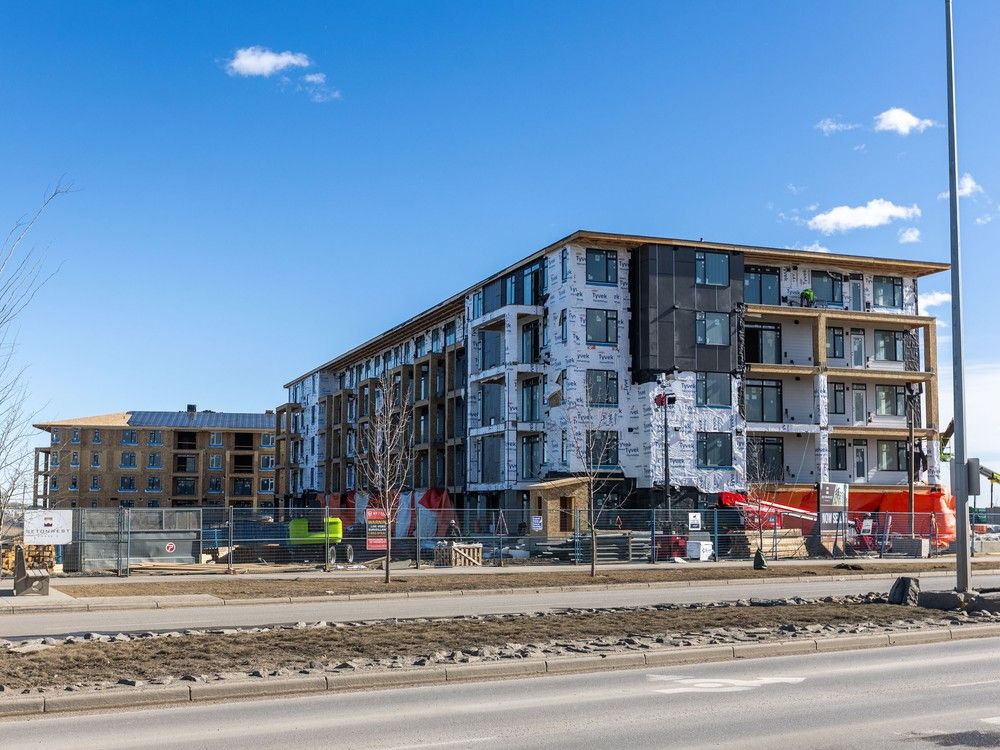
As oil prices slumped below US$59 a barrel on Friday, some solid news was bobbing above the choppy economic waters on another important front for Alberta — jobs.
As in, a lot more people are working across the province.
In fact, 42,500 new jobs were created in the province last month, making up more than 70 per cent of the entire country’s employment gains in September, according to the latest labour force survey by Statistics Canada.
“As far as we can see, outside of some of the (pandemic) craziness in 2020, it was the single-biggest monthly increase in Alberta jobs on record,” BMO chief economist Douglas Porter said in an interview.
With a 1.7 per cent bump in provincial employment between August and last month, c onsider this a glass-half-full moment as a turbulent 2025 continues through the fourth quarter, even with ongoing uncertainty surrounding tariffs and feeble oil prices.
“To put it in perspective, a 1.7 per cent increase for some provinces, that’s a good year, not a good month,” Porter said.
“Alberta is literally in a league of its own.”

Provincial employment data in the monthly survey can frequently have a lot of noise and volatility — as ATB Capital Markets has pointed out — and Alberta shed 17,000 positions in July and another 14,000 in August.
Yet, the longer term tells an important directional story.
Over the past 12 months, Alberta employment levels have risen by 3.8 per cent, by far the strongest in the country, with the next highest growth seen in Saskatchewan at 2.3 per cent. And that’s compared with just a little over one per cent increases in the rest of the country, Porter said.
However, it’s also worth noting that population growth continues in Alberta, albeit slower than in recent years, and the unemployment rate remains stubbornly high.
While it dropped 0.6 percentage points between August and September to 7.8 per cent, the jobless rate is still the highest reported among the western Canadian provinces.
It’s important to look at where some of the employment gains came from, with manufacturing positions increasing by almost 8,000 in September, construction jobs up 8,400, and professional, scientific and technical services employment climbing by 6,500 roles.
“We saw this kind of job growth in some industries in Alberta that’ve been a bit in trouble elsewhere in the country,” said Jake Lenarduzzi, senior economist with the Conference Board of Canada.
“It’s a good sign for the Alberta economy, especially after we’ve been seeing the unemployment rate tick up a bit over the last little while.”
In fact, the jobless rate still remains slightly higher than a year earlier. In Calgary, it stood at 8.1 per cent, and 8.7 per cent in Edmonton.
Housing starts have also been strong this year, while Alberta faces a lower U.S. tariff rate than most other provinces because energy dominates export levels. Almost all o il and gas exports are compliant under the Canada-United States-Mexico Agreement and face no American levies.

“ The unemployment rate has gone down and it’s a positive trend. We talk about youth unemployment, it is now in line with national rates,” Alberta Jobs and Economy Minister Joseph Schow said in an interview.
“But the broader picture here is there are jobs in Alberta and it’s a great place to invest, and we’re seeing businesses coming here and setting up shop.”
With so much uncertainty surrounding business investment as the trade tussle with the United States continues, the next few months will set the groundwork for 2026.
BMO is projecting Alberta will lead the country in economic growth this year at 2.1 per cent, compared with 1.2 per cent nationally.
The Conference Board of Canada projects Alberta’s GDP will expand by about two per cent next year and 2.6 per cent in 2027, even as the population boom deflates.
Energy prices remain a wild card, as they can drive billions of dollars of investment into exploration and production activities.
On Friday, prices for benchmark West Texas Intermediate (WTI) crude fell $2.61 to close at US$58.90, its lowest level in five months, as nagging concerns over increased OPEC+ supplies, higher inventory levels and geopolitical factors weigh on the market.
“Over the next year or so, there’s going to be a significant amount of downward pressure,” said Lenarduzzi.
“Ultimately, it’s just a lot of supply feeding into the market.”
Pressure for producers to become more efficient and trim spending is playing out in both the U.S. and Canada. I mperial Oil announced in late September it will eliminate about 900 jobs in the country by the end of 2027, with the majority of the employment losses at its Calgary head office, while large producers have cut jobs south of the border.

A forecast from the U.S. Energy Information Administration last week projected WTI spot prices will average $58 a barrel during the fourth quarter, before dropping to $48.50 next year.
In Alberta, oil production has been climbing this year while the price discount on Western Canadian Select heavy crude remains relatively low since the startup of the Trans Mountain expansion.
Meanwhile, OPEC+ members are moving ahead with plans to raise output, with lower prices the “ inevitable consequence” of too much global supply, said Rory Johnston, founder of the Commodity Context newsletter.
“At what point do we begin to see the Canadian oilpatch pull back on investment commitments? And right now, we’ve been growing pretty strong over the past year or two in terms of supply gains,” he said.
“The question now is: Is it going to continue with the prices in the $50s? And I think we have to wait and see how long we hang at these levels.”
Chris Varcoe is a Calgary Herald columnist.